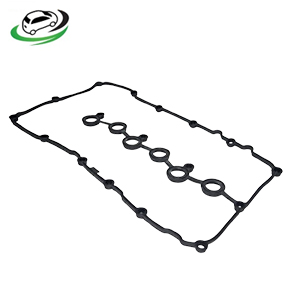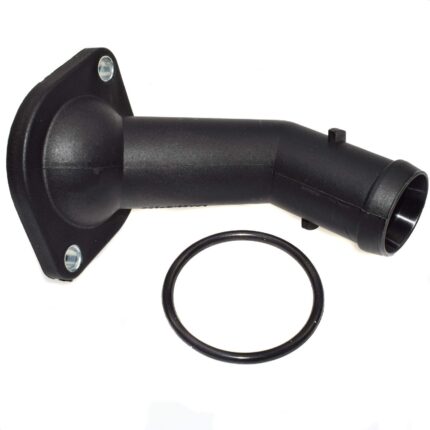-20%
Get Engine Oil Dipstick Tube Audi A3 8L1-1.6L/1.8L/ A3 8P1-1.6L / VW Jetta 1K2/Golf MKV/Golf MKIV/Bora 1J2/Beetle 1Y7/Beetle 1C1 06A103663C
The engine oil dipstick tube is an integral component of an internal combustion engine’s lubrication system. It serves as the conduit through which the engine oil dipstick is inserted and removed, allowing vehicle owners and mechanics to measure the engine oil level. This guide will cover the function, construction, types, symptoms of issues, diagnosis, and replacement of the engine oil dipstick tube.
What is an Engine Oil Dipstick Tube?
The engine oil dipstick tube is a metal or plastic tube that extends from the engine block to the engine bay. It provides a channel for the dipstick, a long, thin metal or plastic rod marked with level indicators. The dipstick is used to check the engine oil level and condition, ensuring that the engine has adequate lubrication.
Functions of the Engine Oil Dipstick Tube
The engine oil dipstick tube performs several critical functions in the engine:
- Providing Access for Oil Level Measurement: The primary function of the dipstick tube is to provide access for the dipstick to measure the engine oil level. By inserting and removing the dipstick, you can check if the oil level is within the recommended range.
- Preventing Contaminants from Entering the Engine: The dipstick tube helps to keep contaminants, such as dirt and debris, out of the engine. The tube’s design prevents foreign materials from entering the engine oil reservoir.
- Ensuring Proper Engine Lubrication: Accurate oil level measurement is essential for maintaining proper engine lubrication. The dipstick tube allows you to monitor the oil level and top it off as needed to ensure optimal engine performance.
- Facilitating Oil Changes: During an oil change, the dipstick tube allows for easy removal and reinstallation of the dipstick. This access is crucial for ensuring that the engine is properly filled with fresh oil.
Construction of the Engine Oil Dipstick Tube
The engine oil dipstick tube is generally constructed from durable materials designed to withstand the harsh conditions of the engine environment. Key components include:
- Tube Body: The tube body is the main component of the dipstick tube, extending from the engine block to the engine bay. It is typically made from metal, such as stainless steel or aluminum, or high-quality plastic.
- Mounting Flange: The mounting flange secures the dipstick tube to the engine block. It is usually equipped with bolts or fasteners that ensure a tight and secure fit.
- Dipstick Tube Seal: The seal, often made from rubber or silicone, provides a tight fit between the dipstick tube and the engine block. It helps to prevent oil leaks and keeps contaminants out of the engine.
- Dipstick Guide: The dipstick guide is a small, usually plastic or metal, component at the top of the dipstick tube. It helps to guide the dipstick into the tube and ensures proper alignment.
Types of Engine Oil Dipstick Tubes
Engine oil dipstick tubes can vary based on their design and application:
- Metal Dipstick Tubes: Metal dipstick tubes are commonly used in many engines due to their durability and resistance to heat and chemicals. They are typically made from stainless steel or aluminum and provide a reliable conduit for the dipstick.
- Plastic Dipstick Tubes: Plastic dipstick tubes are often used in modern engines to reduce weight and cost. They are usually made from high-quality, heat-resistant plastics and are designed to withstand engine conditions.
- Integrated Dipstick Tubes: In some engines, the dipstick tube is integrated into other engine components, such as the oil pan or valve cover. These integrated designs can simplify the engine’s construction and reduce the number of components.
Symptoms of Issues with the Engine Oil Dipstick Tube
Problems with the engine oil dipstick tube can lead to various issues affecting engine performance and reliability. Common symptoms of issues with the dipstick tube include:
- Oil Leaks: A damaged or improperly sealed dipstick tube can cause oil leaks. You may notice oil pooling around the base of the dipstick tube or dripping onto other engine components.
- Difficulty Removing or Inserting the Dipstick: If the dipstick tube is damaged or clogged, it may be difficult to remove or insert the dipstick. This can make it challenging to check the engine oil level.
- Engine Overheating: A malfunctioning dipstick tube can contribute to engine overheating if it leads to oil leaks or prevents proper oil level monitoring. Low oil levels or insufficient lubrication can cause the engine to overheat.
- Check Engine Light: In some cases, issues with the dipstick tube may trigger the check engine light. The engine control unit (ECU) may detect problems related to oil pressure or engine performance.
- Oil Contamination: If the dipstick tube seal is compromised, contaminants such as dirt or moisture may enter the engine oil. This can lead to oil contamination and reduced engine performance.
Diagnosing Issues with the Engine Oil Dipstick Tube
Diagnosing issues with the engine oil dipstick tube involves several steps:
- Visual Inspection: Perform a visual inspection of the dipstick tube and surrounding areas for signs of oil leaks or damage. Check for any oil residue or pooling around the base of the tube.
- Check for Proper Seal: Inspect the seal around the dipstick tube to ensure it is intact and properly seated. A damaged or missing seal can lead to oil leaks or contaminants entering the engine.
- Test Dipstick Operation: Remove and reinstall the dipstick to check for any difficulty or resistance. If the dipstick is difficult to remove or insert, it may indicate a problem with the dipstick tube.
- Monitor Engine Performance: Pay attention to any changes in engine performance, such as overheating, rough running, or the check engine light. These symptoms can provide clues to issues with the dipstick tube.
- Inspect for Contaminants: Check the engine oil for signs of contamination, such as dirt or moisture. Contaminated oil can indicate a problem with the dipstick tube or seal.
Replacing the Engine Oil Dipstick Tube
If a problem with the dipstick tube is identified, replacing it is necessary to restore proper engine function. The replacement process typically involves the following steps:
- Prepare the Vehicle: Ensure the engine is cool before starting the replacement process. Disconnect the battery to prevent any electrical issues during the repair.
- Remove the Old Dipstick Tube: Locate the dipstick tube and remove any bolts or fasteners securing it to the engine block. Carefully extract the old dipstick tube from its mounting position.
- Install the New Dipstick Tube: Position the new dipstick tube in the mounting location, ensuring it is properly aligned with the engine block. Secure the tube with the appropriate bolts or fasteners, following the manufacturer’s specifications.
- Install the New Seal: If the replacement dipstick tube does not come with a new seal, install a new seal around the base of the tube. Ensure that the seal is properly seated to prevent oil leaks.
- Reconnect Components: Reconnect any components that were removed or disconnected during the process. Reinstall the dipstick and ensure that it moves smoothly in and out of the tube.
- Check for Leaks: Start the engine and monitor the area around the dipstick tube for any signs of oil leaks. Ensure that the engine oil level is within the recommended range and that the dipstick is functioning correctly.
Choosing the Right Engine Oil Dipstick Tube
When selecting a replacement dipstick tube, consider the following factors:
- OEM vs. Aftermarket: OEM (Original Equipment Manufacturer) dipstick tubes are designed to meet the exact specifications of your vehicle and provide reliable performance. Aftermarket dipstick tubes can vary in quality, so choose a reputable brand if opting for an aftermarket part.
- Compatibility: Ensure that the dipstick tube is compatible with your vehicle’s make, model, and engine configuration. Verify the part number and specifications before making a purchase.
- Material and Design: Choose a dipstick tube made from durable materials that can withstand the harsh conditions of the engine environment. Consider the design of the tube, including any integrated features or seals, to ensure proper fit and function.
Follow us on Facebook for more parts.



